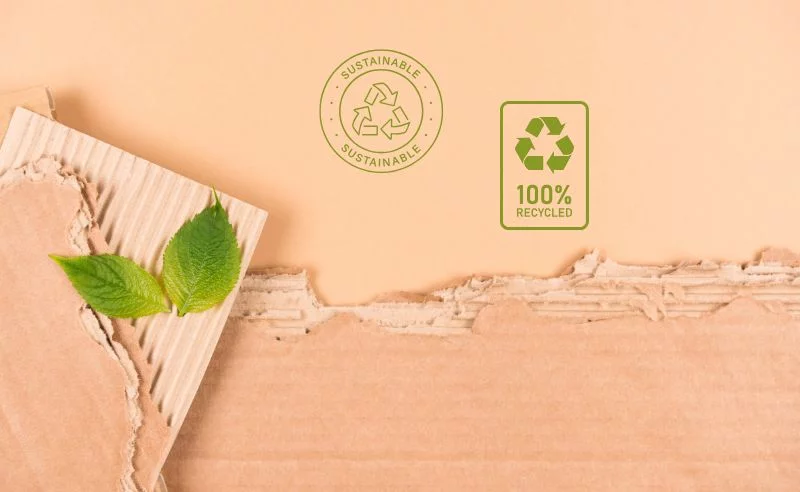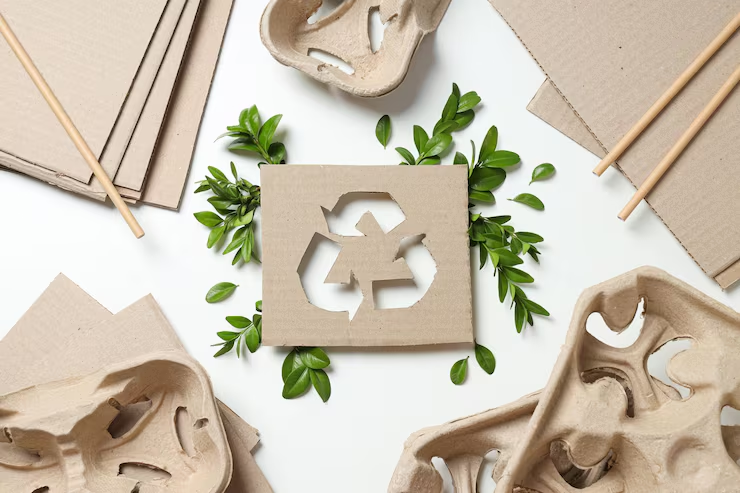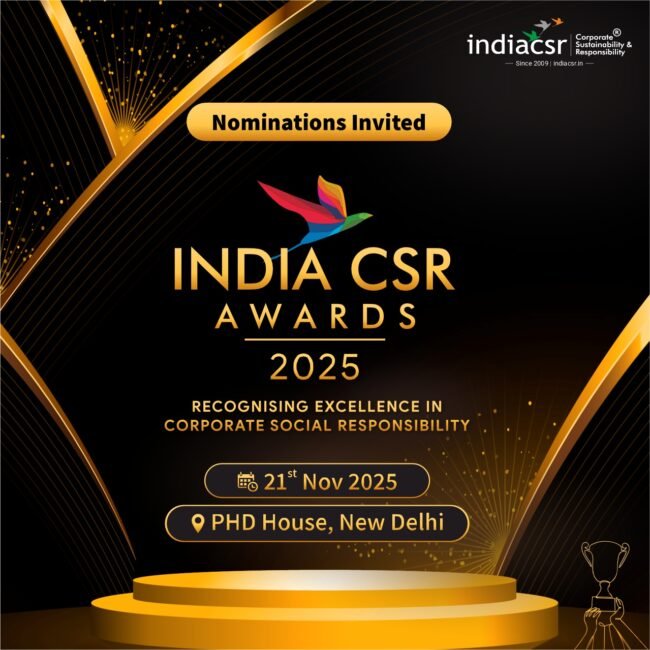
By Amit Bhasin
What if packaging wasn’t the end of a product’s journey, but the beginning of a climate solution? As the world marks International Day of Climate Action on October 24, it’s time to spotlight one of the most overlooked levers in climate conservation: packaging. Packages often arrive at our doorstep only to become instant trash. This simple cycle is exactly where the battle for a sustainable future begins. Each box, bottle, and wrapper can be the start of a circular story if we rethink the systems and habits that keep waste piling up.
A 2024 Lawrence Berkeley National Laboratory report estimates plastics lifecycle emissions could reach 104 to 130 gigatons CO2 by 2050, consuming over half the carbon budget for 1.5°C warming. Virgin plastic production is also highly emissions-intensive due to fossil fuel extraction and refining. Hence, a scientifically proven and sustainable approach in packaging as well as plastic production is crucial to mitigate the critical climate threat that it poses currently.
Circular Packaging: The Need of the Hour
The transformation has already begun, and it is about more than just swapping materials. It is about shifting from a culture of disposability to one where every package has a second, third, or even infinite life. In countries with progressive sustainability goals, major retailers and FMCG brands are designing packaging for longevity, investing in reuse and refill pilots that enable a true closed loop. These models will reduce dependency on virgin resources and normalize packaging that’s not just used but valued.
The global shift towards climate-friendly circular packaging is also being driven by a powerful three-way synergy between policy, corporate innovation, and changing consumer behaviour. Regulatory pushes, such as the ambitious European goal for fully circular beverage packaging by 2030 (aiming for 90% collection and 100% recycled content), set high industry standards. The national and regional efforts, including India’s Project Circular Bharat and reusable packaging startups across Southeast Asia, also provide scalable economic models. Crucially, this institutional momentum is reinforced by an outside-in perspective – a major shift in consumer choices, as highlighted by PwC research[1], where a growing segment of sustainability-seeking customers increasingly prefer and are willing to pay more for green, transparently sourced, and circular products, making the transition an economic imperative, not just an environmental one.
Material Innovation Has Arrived
Efforts to scale biodegradable and recycled-content solutions are also driving a quiet revolution across the sector. Brands adopting these innovations are discovering that when values are expressed through thoughtful design, consumer loyalty deepens. Yet, material innovation is never a one-size-fits-all approach. Each product, market, and region calls for context-sensitive solutions that balance regulatory expectations, cost considerations, and customer experience. In this circular mindset, failures are not waste but valuable feedback – catalysts for smarter innovations and streamlined practices.

India’s Climate Leadership: A Model for Integration
This spirit of purposeful adaptation is mirrored in the global climate agenda too, where the Global South, and increasingly India, is taking a leadership role. India’s climate progress speaks for itself: in 2020, the country reduced its greenhouse gas emissions by 7.93% and achieved a 36% drop in emission intensity of GDP between 2005 and 2020, moving steadily towards its 45% target for 2030. Aligned with its long-term vision of becoming a Viksit Bharat by 2047, India has committed to net-zero emissions by 2070. The Union Budget 2025 reinforces this trajectory by prioritizing energy security, expanding clean energy capacity, and fostering domestic manufacturing of green technologies. Crucially, India’s leadership emphasizes that climate action must be holistic and interconnected.
What’s interesting to note is that circular packaging directly supports Sustainable Development Goal 12 (Responsible Consumption and Production) by shifting away from the traditional ‘take-make-waste’ model toward a regenerative system that prioritizes reuse, recycling, and composting. This approach minimizes resource depletion and waste while reducing greenhouse gas emissions and environmental harm. It also aligns closely with SDG 13 (Climate Action), as sustainable packaging solutions help cut carbon footprints across supply chains. By integrating emission reduction with these broader SDGs, climate solutions can simultaneously tackle poverty, inequality, and environmental degradation through innovations like designing durable, recyclable packaging and adopting closed-loop systems, all strengthened by robust global partnerships to address these shared challenges.
Reverse Logistics: Closing the Loop
In India’s FMCG landscape, brands are also now embedding these principles into their sustainability roadmaps. One notable step forward came this World Environment Day, when Marico Limited introduced a framework titled 2030 Decade of Action – to assess the circularity of its packaging materials, aligning with its 2030 goals on climate and environmental responsibility. The initiative evaluates aspects such as design efficiency, material reuse, lifecycle recovery, and consumer engagement to uncover practical pathways for improving packaging performance and reducing environmental impact.
Collaboration & Consumer Engagement: The Key to Success
Circularity is fundamentally social. Success stories hinge on deep collaboration – businesses working alongside recyclers, policymakers standardizing processes, and consumers accepting responsibility for disposal or return. Open communication and education reshape habits, while narratives of collective action encourage widespread adoption.
The most effective leaders recognize that change is made easy and meaningful for people: convenient take-back programs, clear digital incentives, and visible acknowledgment of responsible actions rebuild the trust eroded by decades of disposability. By positioning circular packaging as a shared commitment, everyone has a real stake in climate action.
Let packaging become a symbol of hope – of cycles renewed and resources respected. Every act of reuse, every thoughtful return gives the planet a little more room to breathe. Together, we can turn ordinary gestures into extraordinary impact.
[1] https://www.pwc.com/hu/en/kiadvanyok/assets/pdf/Closing-the-loop-the-circular-economy.pdf
About the Author
Amit Bhasin, Chief Legal Officer & Group General Counsel and Secretary of the CSR Committee, Marico Limited.
Terms & Conditions: India CSR does not permit other Websites/agencies to copy or reproduce, or reprint the above article/feature in any form or means.
Also Read: Marico ESG 2030 Roadmap Marks Milestone in Climate Action with 93% Emission Reduction







